OUR BURNING PLANET – VISUAL ESSAY
San lands ‘invaded’ by cattle in Namibia
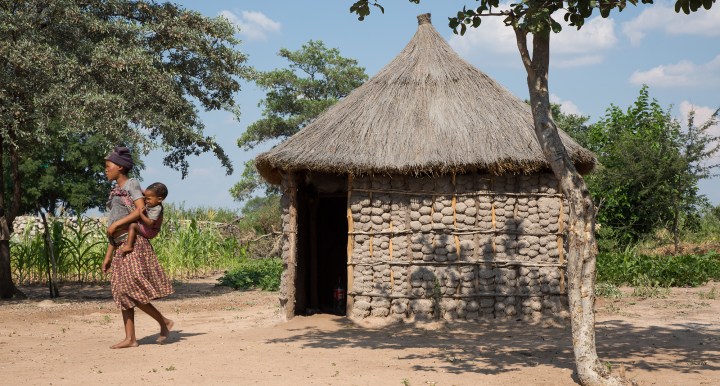
Cattle may be the last act for some of humanity’s first people, the Ju|’hoansi.
Located in remote northeastern Namibia, close to the Botswana border, the 9,000km2 Nyae Nyae Conservancy is one of the last two remaining San lands. Because of this land, the Ju|’hoansi San still practice hunting with bow and arrows and are able to maintain their culture. But the world’s oldest culture is now under threat from pastoralists.
The Ju|’hoansi, like other San people, have been subjected over the past two thousand years to colonialism, genocide and dispossession. In recognition of their historical ownership of the land, the Namibian government legally established the land as the Ju|’hoansi’s in 1998. Approximately 1,450 people are members of the conservancy, which is managed through a traditional authority.
But because of a climate change-induced drought and land hunger, pastoralists have been moving into Tsumkwe, the administrative centre of the Otjozondjupa region, and their cattle and goats are invading and destroying the surrounding Nyae Nyae Conservancy. Since 2009, the cattle population in Tsumkwe has tripled and, despite their legal communal status, the Ju|’hoansi do not have the political power to stop this influx of people and animals.
The future is not great for the Ju|’hoansi. The manager of the Nyae Nyae Conservancy, Erastus Heinrich, predicts that if the cattle aren’t removed, “the whole of the conservancy will be filled with Tsumkwe cattle farmers. They will start with land-grabbing… that’s what I’m seeing already. There will be illegal farming taking place within the conservancy. I think the conservancy will die out as well.”
Despite repeated written requests, the Namibian government declined to comment on the situation in Nyae Nyae.
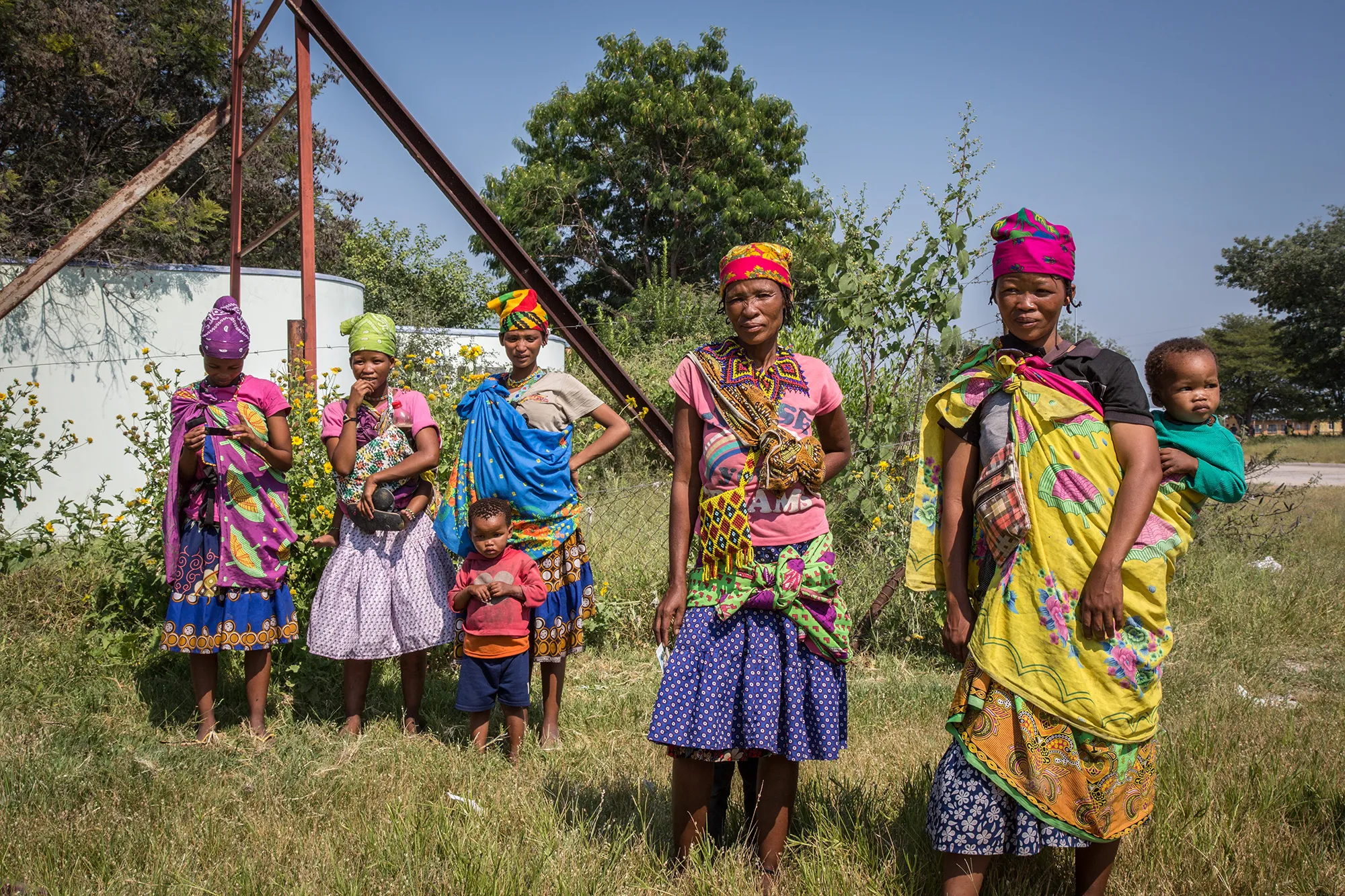
From left: Di//ao G╪kao, Xoan// Niani, Se//ae /Ai!ae, N//ing /Ai!ae, and Baqu /ui on the main street of Tsumkwe in the Otjozondjupa region of Namibia. While the Ju|’hoansi manage the Nyae Nyae Conservancy, the town of Tsumkwe is under government control and it is from the town that cattle and goats owned by Herero farmers spread out into the surrounding conservancy. The Ju|’hoansi name for Tsumkwe is Tjum!|kui, which means ‘poison arrows’. (Photo: Tristen Taylor)
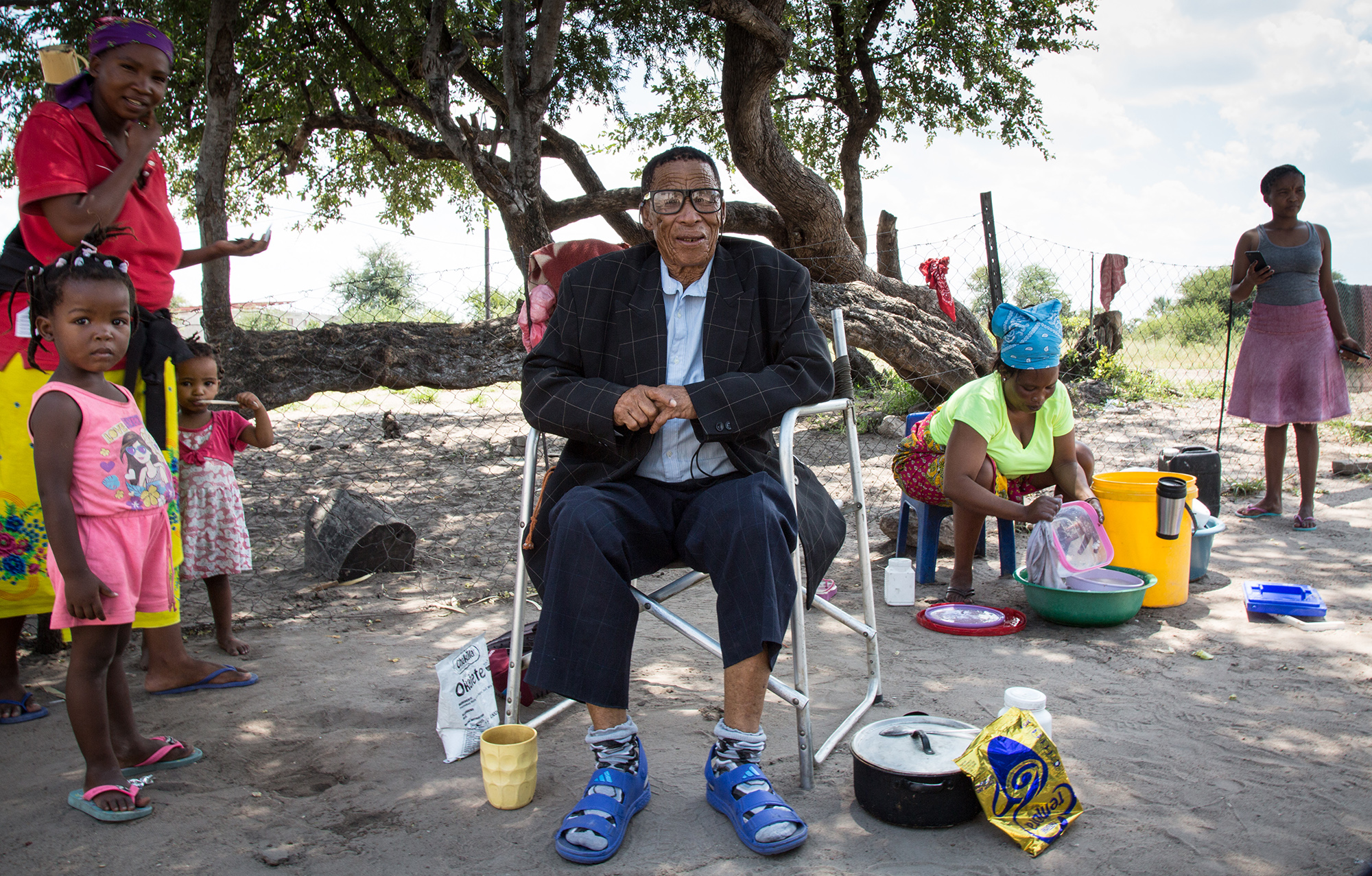
Tsamkxao ╪oma is the chief of the Ju|’hoansi at the Nyae Nyae Conservancy in Namibia. His family surrounds him. He has seen traditional ways of the Ju|’hoansi decline since the American anthropologist, Lorna Marshall, came to the area in 1951. ╪oma says, “The aim of the Conservancy was to preserve our future children and their children and their children’s children but it doesn’t look like we will achieve this goal because of people coming in with loads and loads of cattle.” (Photo: Tristen Taylor)
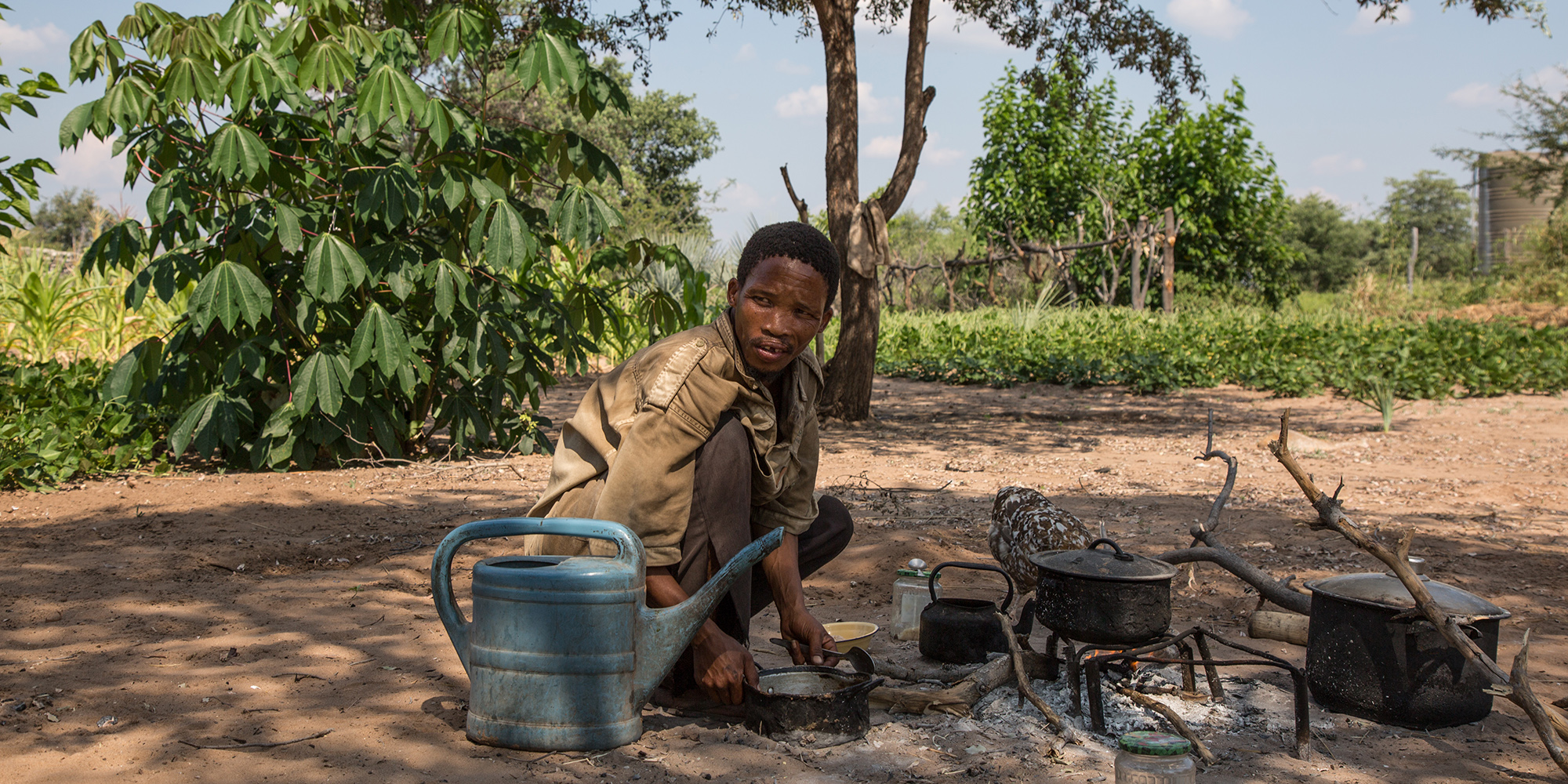
N!aici cooking food aid at ╪omlolo village. Nyae Nyae is one of the last places where San people can still legally hunt. The conservancy has strict rules on hunting: only traditional methods, such as bow and arrows, are allowed. (Photo: Tristen Taylor)

Herero cattle grazing within Nyae Nyae Conservancy. ╪oma Tsamkxao, one of the leaders of the community, says there are two sets of rules under the slogan One Namibia, One Nation – one for the San and another for everyone else: “Just go to Oshiwambo land and try to drive your cattle in, and see what happens to you. Immediately they will chase you out, you will get arrested.” (Photo: Tristen Taylor)
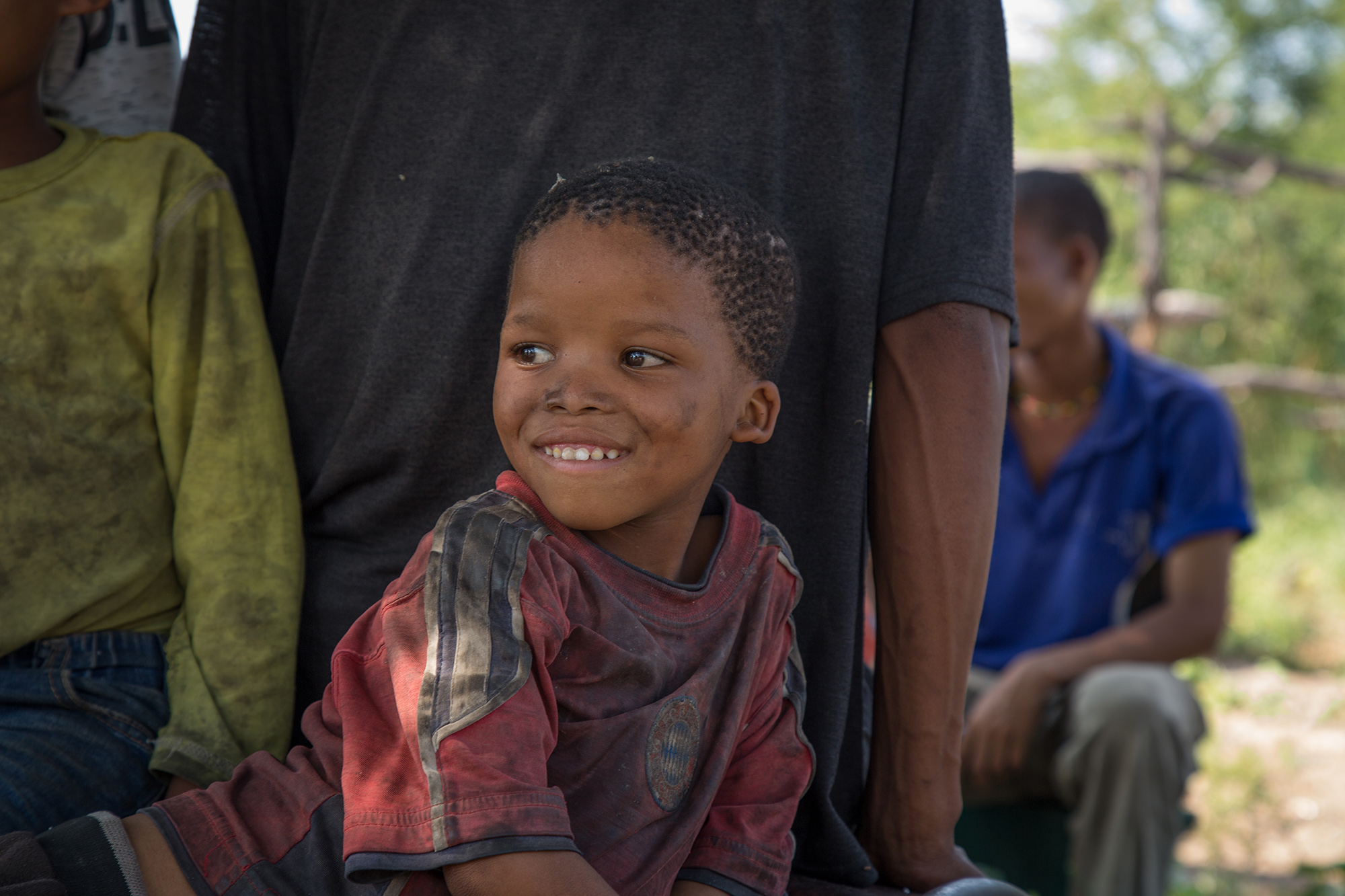
Ju|’hoansi boy at ╪omlolo village, one of the 38 villages of the Nyae Nyae Conservancy. The chief of the Ju|’hoansi, Tsamkxao ╪oma says, that “too many cattle overgrazing will cut down our tradition. Without the nature, there is nothing to show people, to your children. What does it mean to everyone? No culture. Culture will die.” (Photo: Tristen Taylor)
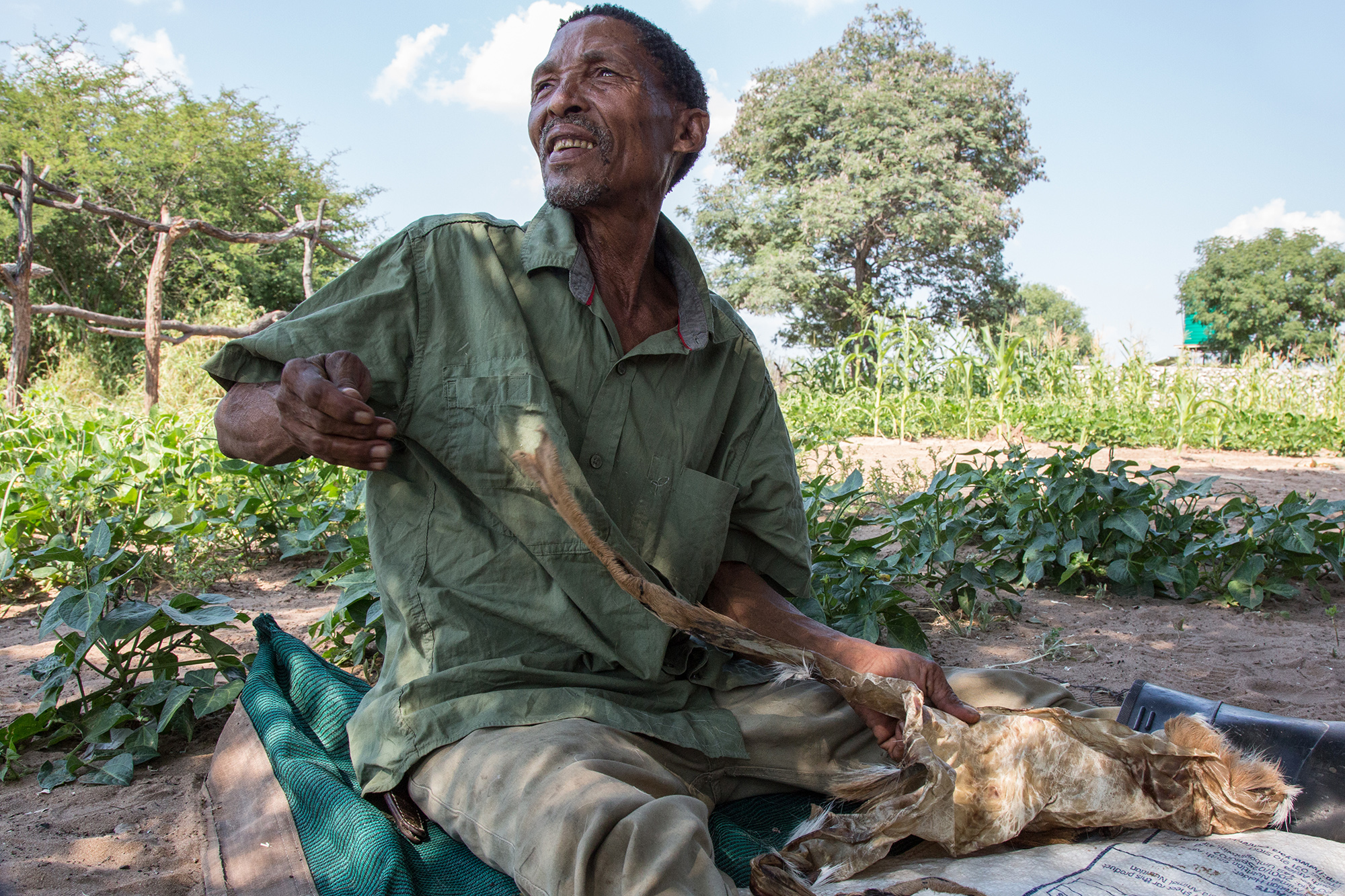
G/aqo Kxao, the chief of ╪omlolo village, prepares steenbok skin to make a loincloth, but that tradition is under threat. He says that if people continue to move into the area and cattle keep on spreading through Nyae Nyae, “there will be no Conservancy. It will be a land grab. There will be no hope in the future. The San community will end up working for the farmers.” (Photo: Tristen Taylor)
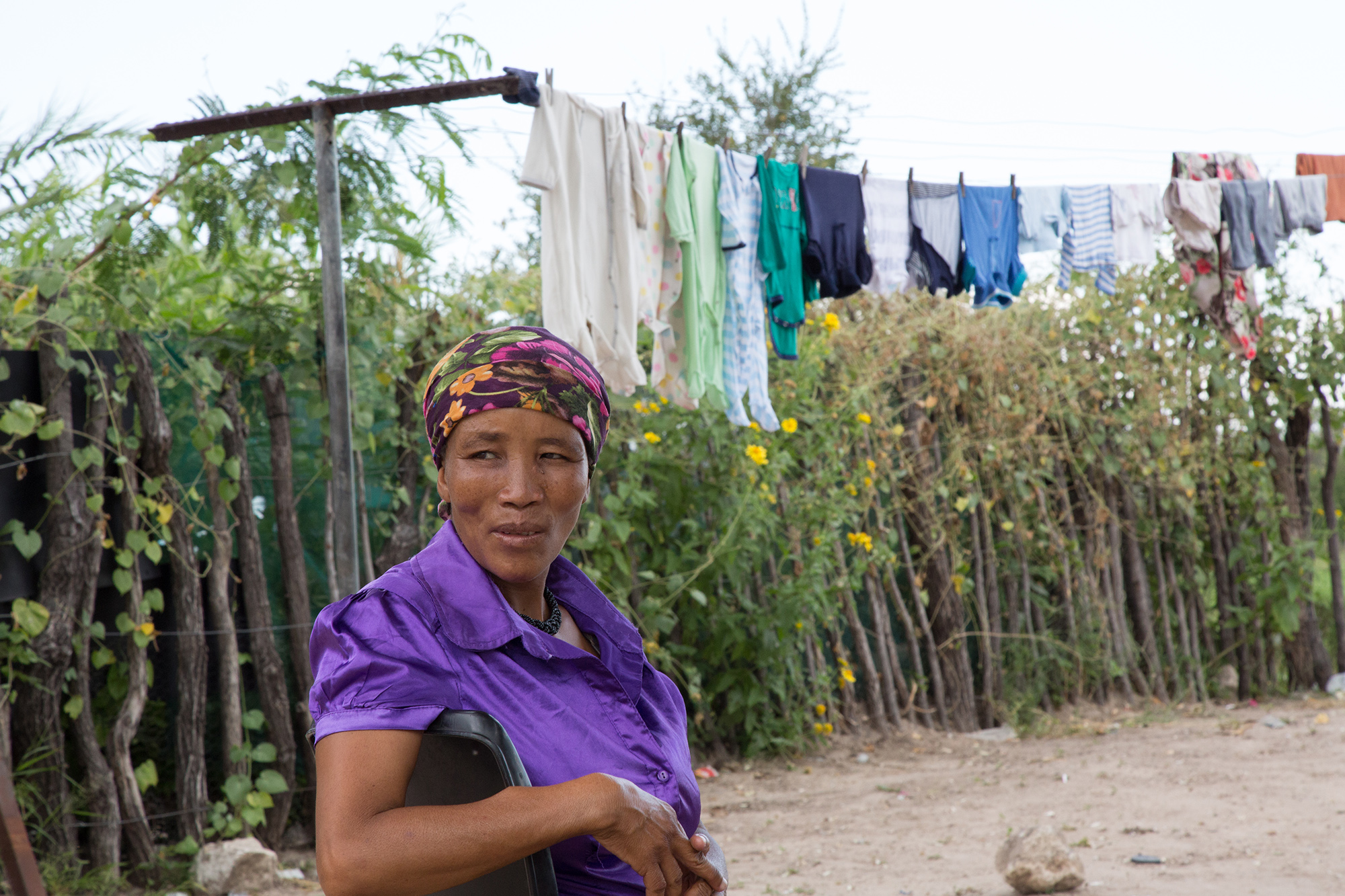
Xoan//a /ai!ae is on the managing committee of Nyae Nyae Conservancy. She tries to assist young Ju|’hoansi women who are facing an epidemic of rape, sexual assault, teenage pregnancy and alcohol abuse. /ai!ae says, “When it was just the San community in Tsumkwe, we did not have these problems. But since 2009 when farmers came in, that was when the issues started and has been non-stop from 2009 up to now.” (Photo: Tristen Taylor)
DM/OBP
The Rosa Luxemburg Foundation and Global Green Grants provided support for the field research for this story.


















 Become an Insider
Become an Insider
Unfortunate as this situation is, it is evolution and survival of the fittest
In modern day parlance that survival depends on having connections to the governing party.
If anybody has a right to the land in this Conservancy, it is the San people, the original inhabitants of all of Southern Africa. Until the 1950s they were hunting with small bows and arrows and throwing spears. To talk of survival of the fittest in relation to them is highly disrespectful. This is how homo sapiens survived for 200,000 years, cooperating and sharing. To regard our way of life as superior, when it exploits and destroys the planet, accompanied by constant wars, theft and deprivation, is a disgrace.
Great to see that Tsamkxao is still alive and probably tickled by the attribution “chief”. The Ju|’hoan have long resisted being exoticised and no doubt wish to be treated simply as a people with rights to the land. That they are competing with the Herero, another long-oppressed group creates a Solomonic dilemma for the authorities.